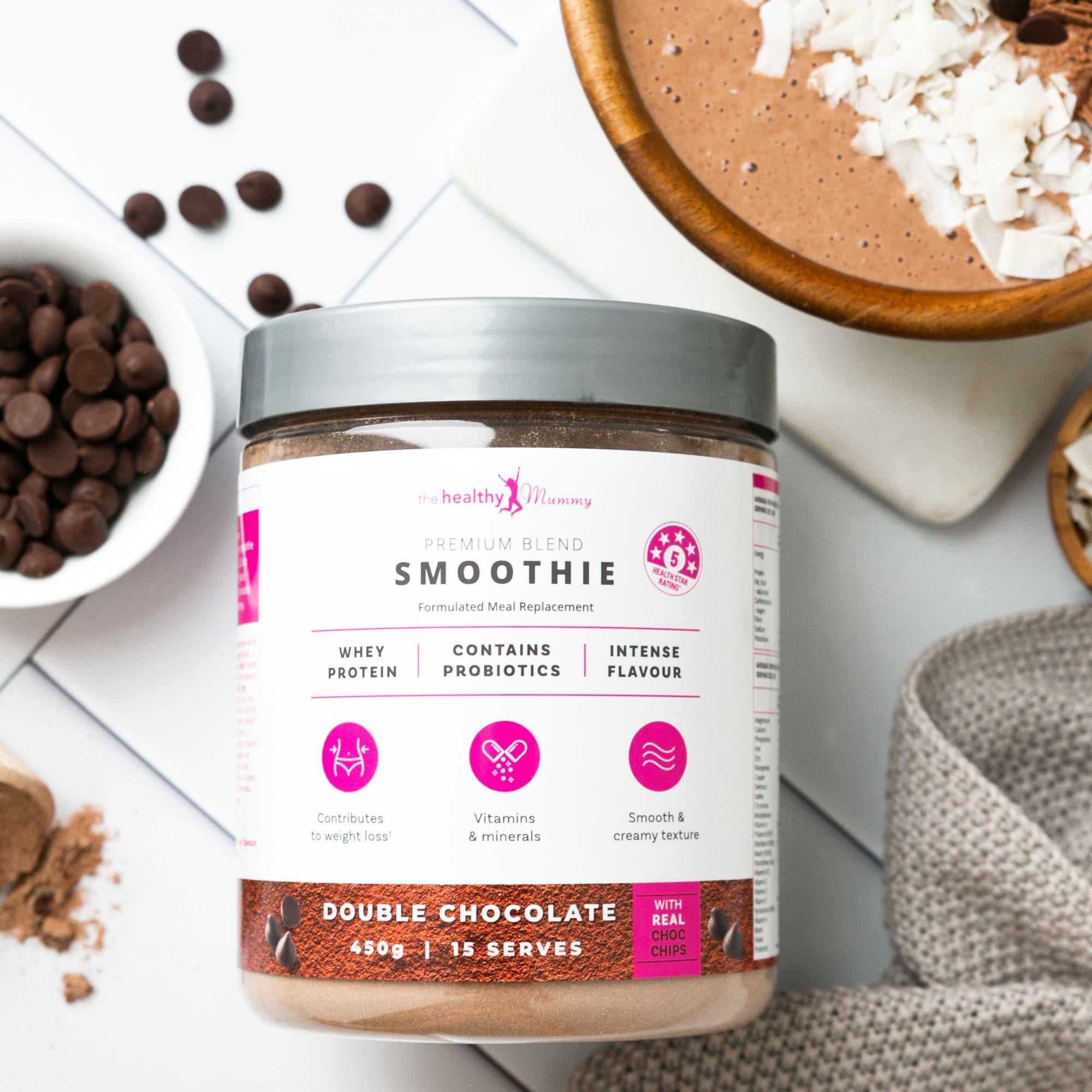Have you started Perimenopause yet?
More than half our population (50.7%) will experience perimenopause as they approach midlife. This occurs as hormone levels decrease and ovaries slow their release of eggs.
Perimenopause usually begins in the early to mid-40s. Some people even begin perimenopause earlier, due to premature ovarian insufficiency or medical treatments such as chemotherapy or surgical oophorectomy (ovary removal).
Menopause is technically the single day 12 months after your last period. It usually occurs five to ten years after perimenopause begins, between ages 45 and 55.
Up to 80% of people in perimenopause experience symptoms. But it’s not just hot flushes – symptoms can be incredibly varied and range in severity.
What are the symptoms?
Oestrogen affects every system in the body and so too can perimenopause symptoms. These include:
- depression and anxiety
- body aches
- “brain fog” and forgetfulness
- irregular periods or periods of unusual heaviness or lightness
- insomnia
- night sweats
- hot flushes
- vaginal dryness
- no interest in sex
- urinary urgency.
It’s impossible to anticipate which, if any, symptoms you’ll experience, or in what order they will begin.

What impact does perimenopause have on work and life?
Around 30% of symptomatic Australians find their perimenopause symptoms significantly interfere with daily activities, including their ability to work.
The Australian Women’s Health Survey reported 46% of participants have taken an extended break from work, study or exercise due to menopause symptoms.
Thanks to the personal nature of many symptoms, and the stigma surrounding them, these statistics may still under-report the impact of perimenopause on both individuals and society.
The Australian Institute of Superannuation Trustees estimated the retirement of women due to menopausal symptoms would equate to lost earnings and super of more than A$15.2 billion for every year of early retirement.
Some women experience significant deterioration in their mental health in the lead up to menopause. Perimenopausal depression (PMD) is a serious illness and is categorised as a subset of major depression. It certainly shouldn’t be dismissed as female “hysteria” or a bad mood when someone is seeking care or support. In fact, female suicide rates increase from ages 40–60.

Know when to seek help
Each woman’s experience will be different, and not all symptoms are related to menopause, but with early recognition and seeking help when needed, this life transition can be a smoother journey.
There are various treatment options for perimenopausal symptom relief. The gold standard is menopausal hormone treatment, which used to be called hormone replacement therapy. This works by counterbalancing the hormone losses of perimenopause and comes in a range of doses and formulations, including gels, patches, pessaries, creams and tablets.
The period after menopause is associated with higher risks for heart disease, diabetes, osteoporosis and dementia. If menopausal hormone treatment is started within ten years of menopause, it may also reduce these risks.
Some women find it helpful to go through a symptom checklist before seeing their GP (or going through it with their GP) if they want an official diagnosis of perimenopause or treatment for symptoms.
There are also national specialist telehealth menopause services available if you’re not getting the care you need locally (currently A$295 or $165 concession, before the Medicare rebate, for a long appointment with a doctor and a detailed report to send to your GP).
And it’s important to know you can seek a second opinion if you’re not being listened to.
Perimenopause doesn’t just impact those personally going through perimenopause, it also affects their partners, families, businesses, workforce participation and gender equity. We all need to be educated about perimenopause and consider how to increase flexibility and support in our workplaces and other environments.
The federal parliament has just commenced a Senate inquiry into issues related to menopause and perimenopause. This will include the economic cost, physical impacts, government policies and programs, and cultural and societal factors. So we can expect to see more discussion of these issues until the final report is delivered in September 2024.
This article is republished from The Conversation under a Creative Commons license. Read the original article.
Weight gain during menopause
Most menopausal women notice they gain weight around their belly around the time of menopause as hormonal changes alter the way the body uses calories.
On average, most women develop menopause around the age of 51, and perimenopause symptoms usually occur four years before their last period.
How to manage your weight during menopause
- Eat a healthy diet
- Do regular exercise, any physical activity is better than none
- Build up your muscle mass with strength training
- Seek menopausal hormone replacement therapy from your doctor
Best foods to support perimenopause
We asked The Healthy Mummy nutritionist what food peri-menopausal women should try and include in their healthy meal plan to help maintain healthy hormones and allow women to enjoy this time of their lives.
Oestrogen
Oestrogen, when we are peri-menopausal, can reach double the amount we had in our bodies when we were teenagers going through puberty! Fibre from lots of different sources like psyllium, flax seeds, apples and pumpkin seeds helps to clear and detoxify the excess amounts.
As well as clearing oestrogen and tasting delicious, the fibre used in The Healthy Mummy Smoothie 45+ has been added to detoxify the hormonal impact of false oestrogens. These are the hormonal disruptors in our everyday environment that further burden our body leaving us feeling even more sluggish and out of control.
While we are talking about the benefits of detoxifying, the liver acts as a filter to clear the hormones no longer needed by the body. Getting the foods the liver needs to work in tip-top condition means eating lots of delicious fresh veggies and fruits, pungent herbs and great quality proteins every day.
The Healthy Mummy Smoothie 45+makes this a little easier with the liver-loving combination of herbs, dandelion root and green tea, amino acid l-methionine and nutrients B6, B9, B12, vitamin C, selenium and molybdenum.
Soy and low allergen choices
Hot flushes affect most women going through peri-menopause and soy helps to dial down their number and heat. Soy also supports balancing the effect of oestrogen: reducing its impact when in excess and boosting levels when low.
As we get a little older we tend to experience more food intolerances leaving us with sensitive tummies and feeling more tired than we should. For this reason, daily choosing a low allergen protein source like rice protein is a sensible idea as it is a lovely low irritant formula tolerated well by most people.
Fibre and protein
Getting the right amount of fibre and protein in your daily diet also means long-lasting, sustained energy without the fatigue crashes and sugar cravings from too many simple sugars. Eating fibre rich fruit and veggies while minimising simple sugars in processed foods, biscuits, cakes and lollies also helps reduce hot flushes and even mood swings as well.
If you need a little help getting extra fibre why not try this delicious Fabulous Fibre Smoothie.

Progesterone
Let’s talk about the hormone progesterone now. The beautiful thing about this hormone is how calming it is for women helping to reduce anxiety and improve sleep.
To make progesterone we need a diet filled with healthy fats, veggies and good quality protein to supply vitamin A, B6, vitamin C and zinc needed from our food.
Try the happy hormone super smoothie
Cooling hot flushes
Cooling hot flushes and keeping them from interfering in your life may need you to avoid the known triggers: alcohol, chilli, warming spices and chocolate. For a lot of my clients, they find this the hardest step to implement but also the most rewarding. Choosing to explore life without alcohol and chocolate, even just temporarily during peri-menopause, gives a big payoff in not only less hot flushes but significant weight loss!

Alcohol and chocolate
Alcohol and chocolate are hardwired into a lot of women’s routines as a way to manage a stressful day. So before I even consider asking someone to take them out of their diet I like to boost their sources of mood supportive nutrients magnesium and calcium.
The following are foods to include in your diet:
Chia seeds are a source of omega-3s, which reduce depression and anxiety.
Oatmeal, which is slow burning, will keep you running all morning and prevent you from crashing and feeling fatigued and hungry.
Kefir has been shown to assist with anxiety and decrease depression. It is rich in tryptophan, which assists with sleep.
Tart cherry juice contains tryptophan, which helps the body produce melatonin, and a good amount of melatonin itself, the sleep hormone that helps the body transition to sleep. Studies suggest that consuming tart cherry juice leads to better and longer sleep.
Dark leafy greens are high in magnesium, which is a great mineral to assist with heartbeat regulation and sleep. Fresh vegetables contain plenty of antioxidants that protect our cells from damage due to free radicals, and can help maintain a healthy weight.
Fatty fish contain fatty acids, which can help regulate blood pressure, which in turn can help to control hot flushes. Fatty fish are also high in vitamin D, which is helpful for bone health and mood.
According to ancient Chinese medicine, apples, spinach, broccoli, eggs and green tea are cooling foods that can help cool you down.
Read more on perimenopause:
Menopause is costing women over FIVE weeks’ sleep a YEAR, new study finds!
Yoga positions to help menopause
10 lesser-known symptoms of menopause and how to manage them
How these mums started their weight loss journey while going through menopause










